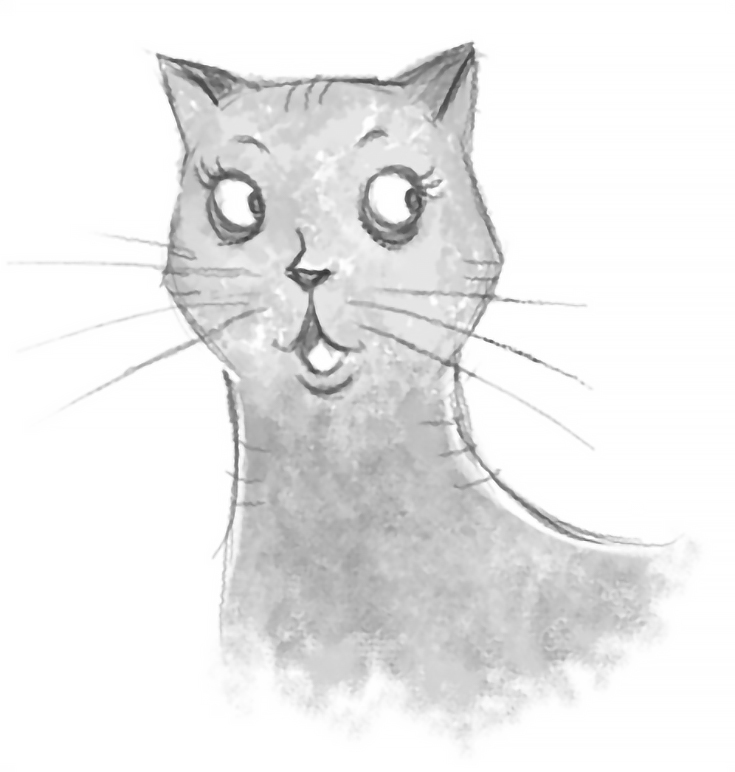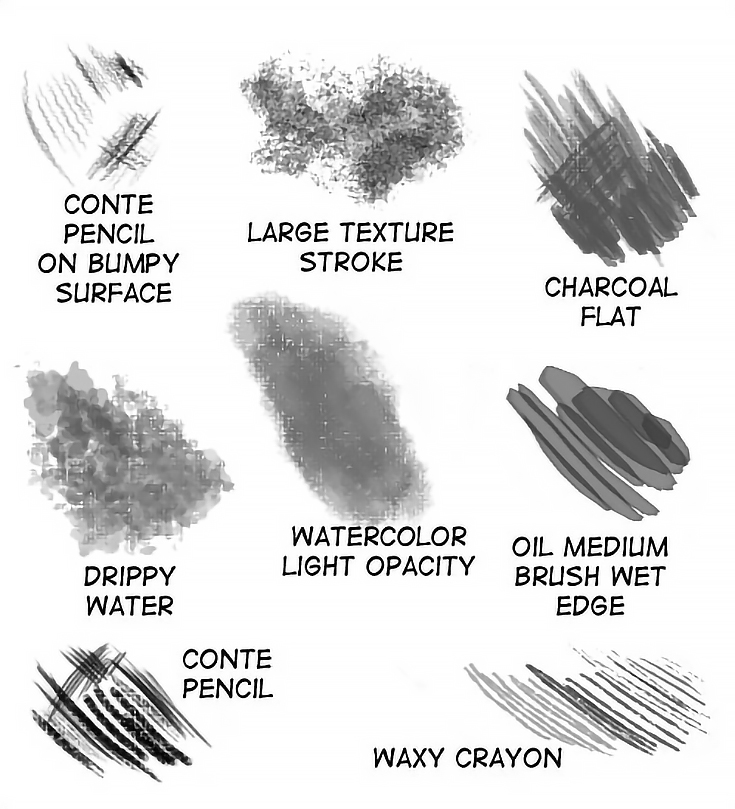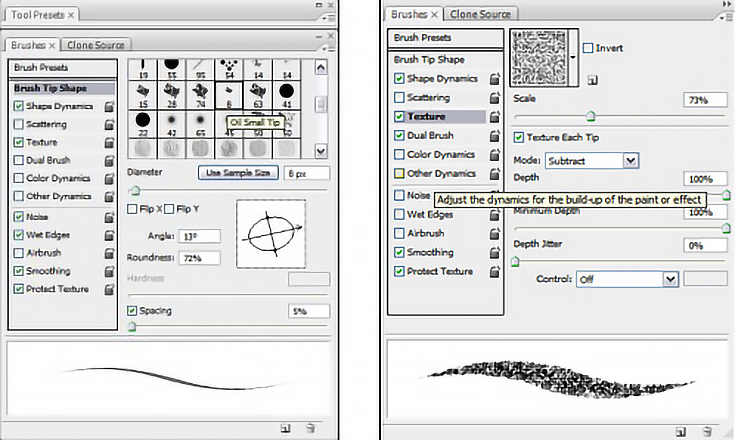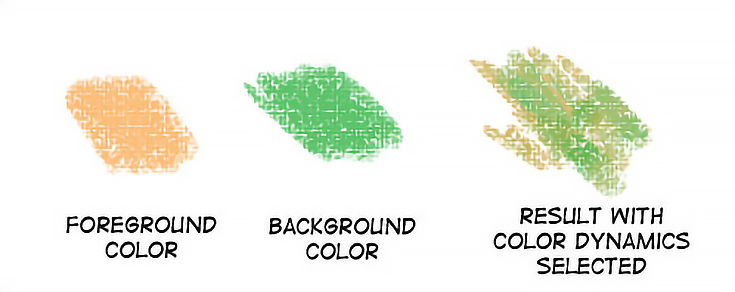Guided Drawing Photoshop Brush Tool
The following tutorial covers few basic techniques you pot use to create digital artwork that has the look and feel of traditional media.
1. Playing with Photoshop brush presets
Quick announcement - EmptyEasel has created a quicker, easier agency for artists to have their personal graphics website. Click Hera to watch many and get a kidney-shaped artistry web site of your possess!
You can make your own brushes, only Photoshop comes with some built in presets that already mimic natural media and are a honorable starting point. They are: Natural Media, Dry Media, and Wet Media.
(I utilize the brushes in these sets so often that I've loaded all triad into my brush menu, then saved them as their own set.)
In this cat sketch, I've in use the Conte Pencil happening Bumpy Surface, Drippy Water and Large Texture Stroke brushes.

Here are those brushes by themselves, along with some of my other favorite Photoshop presets:

To change your brush, come home on the the sweep manipulate menu under "windowpane" operating room click the brush icon over in your Tool Presets.
These brush tool controls are incredibly powerful. You give the axe alteration the size and shape of your brushes, line up the your settings to tab pressure or pen tilt, cause them to spread out As you draw, add texture, play with colouring and opacity dynamics and more.

2. Working with brush texture
For ME, this is the single biggest secret in making natural looking media in Photoshop. You can make or use your own customised textures, but Photoshop has single built in presets. My favorites are the Creative person Surfaces and else paper surfaces.
A hurried note on the texture settings: Scale of measurement changes the size of it of the texture and Mode changes the amount of texture in your brush apoplexy.
I find that Subtract (delineate in the image up in a higher place, and to the right) tends to give you the most texture. Color Burn and Multiply are also good choices.
3. Using color dynamics
Color Kinetics is another great tool that gives your digital study a more traditional feel. Basically, by dynamic the dynamics you can take your foreground color and mixes it with your backdrop color as you draw/key.
What's then awesome about this is that you can combine entirely different colours, or different shades of the same color, without having to date back and keep pick contrastive colors with your eyedropper or selecting color by hand out. (See example below).

Essentially, you're mimicking a painter who has two colors going simultaneously on a dirty copse. Using vividness dynamics with somewhat unlike hues or values of the same color is also a great way to add a snatch more life to your brushstrokes and colors with very emotional effort.
You can adjust how much your hue, saturation, luminousness, and purity of discolor is subject. You can also set up it to go crazy with mixing foreground and screen backgroun—or, you can equal more subtle. I like to hold in my color kinetics by pen pressure, merely you put up other shipway of controlling it, too.
4. Learning layering techniques
Aside its nature, digital media is flat. To successfully mimic traditional media, you testament need to create the illusion of a bumpy canvas or 3-D layers of paint connected paint.
So when you're working, don't settle for just one of these personal effects discussed in this teacher. Rather, use a diverseness of brushes, textures, and techniques connected top of each other in the same piece to make interest and deepness.
5. Don't be perfect!
The final key in devising your integer art spirit corresponding traditional art is to exist messy. Going for a traditional pencil sketch? Leave some of your lines sloppy, sketchy and light to sham real pencil marks.

And remember, when you erase layers of pencils on real theme you can't always get rid of them entirely. Soh you should leave a hint happening your digital paper too. Erase in stages, with lower opaqueness.
If you'rhenium releas for acrylic or oils, steer clear of the to a fault smooth airbrushed look, and Army of the Pure the energy of your strokes show. Consumption texture if you want to create a dry napped-look top layer—operating theatre purpose discolour kinetics to get to a greater extent miscellaneous layers of 'paint' coloration.
Lastly, if you're mimicking watercolor, let your 'paint' phlebotomise a little bit outside the lines. And you never want to cover all inch of your go. Use the white of your canvas just as you would the white of your watercolor report.
I hope these techniques prove to be laborsaving. Course, the outflank advice I can open you is to experiment as much as feasible and find which settings work best for you.
To register more articles by Karyn, please visit her website at KarynLewis.com .

NOTE: You English hawthorn also be concerned in Electrical engineering's step-by-step drawing off guide for artists. Click below to learn Thomas More!

This post may contain affiliate links.
Guided Drawing Photoshop Brush Tool
Source: https://emptyeasel.com/2009/12/08/how-to-use-digital-brushes-to-make-natural-looking-drawings-in-photoshop/
0 Response to "Guided Drawing Photoshop Brush Tool"
Post a Comment